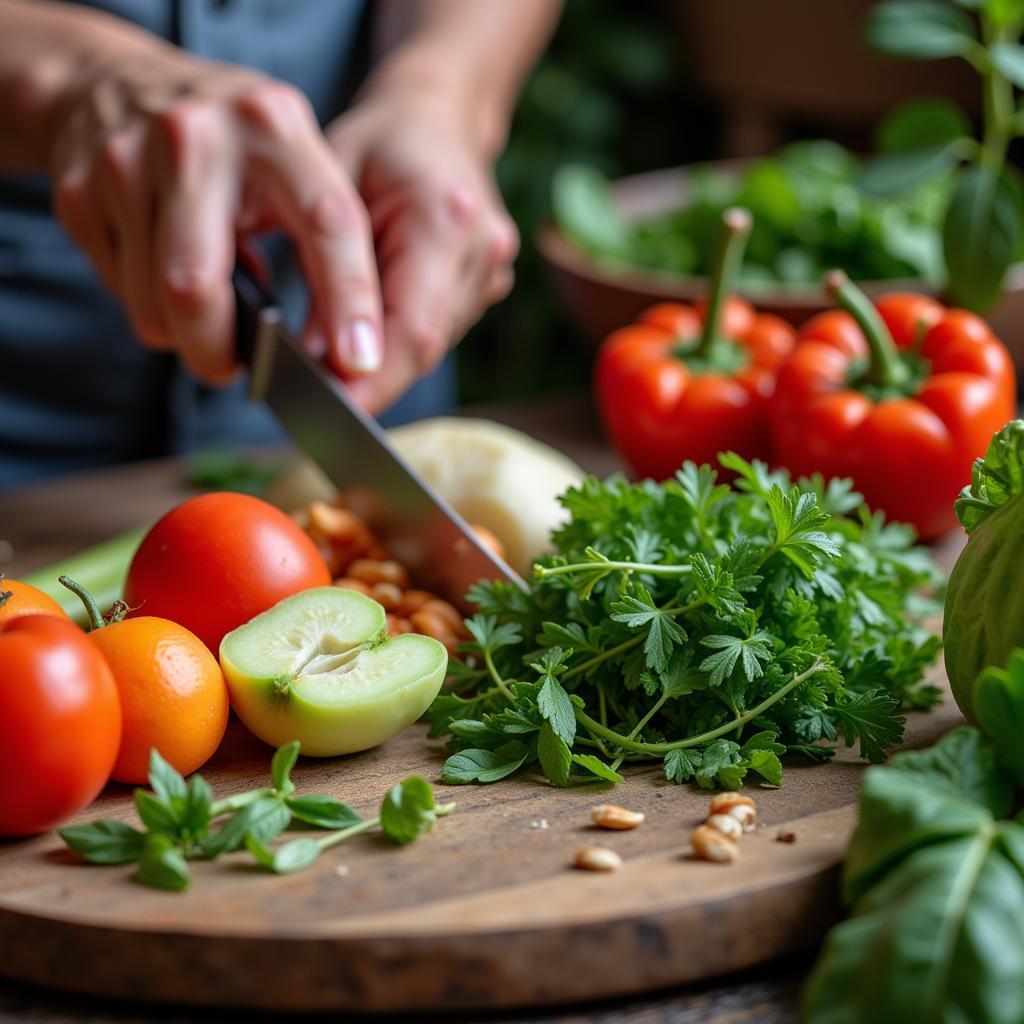Ancestral Foods are gaining popularity as people seek healthier and more sustainable diets. But what exactly are they, and why should we consider incorporating them into our modern lives? Let’s delve into the fascinating world of ancestral eating and discover the benefits it offers.
What Are Ancestral Foods?
Ancestral foods refer to the foods our ancestors consumed before the advent of modern agriculture and processed food. These foods are typically whole, unprocessed, and nutrient-dense, including fruits, vegetables, nuts, seeds, lean meats, fish, and fermented foods. These diets varied depending on geographic location and climate, from the Lakota traditional foods of the North American plains to the diverse cuisines of the Los Andes foods. The core principle revolves around consuming foods in their most natural state, minimizing processed ingredients and artificial additives.
Why Choose Ancestral Foods?
The modern diet, often laden with processed foods, sugar, and unhealthy fats, has been linked to various health problems. Ancestral eating offers a compelling alternative, focusing on whole, unrefined foods that provide optimal nutrition.
-
Improved gut health: Fermented foods, a staple in many ancestral diets, are rich in probiotics that support a healthy gut microbiome. A balanced gut contributes to better digestion, improved immunity, and even mental well-being.
-
Reduced inflammation: Ancestral foods are naturally low in inflammatory compounds commonly found in processed foods. This can lead to a decrease in chronic inflammation, a key factor in many modern diseases.
-
Stable blood sugar levels: By avoiding refined sugars and processed carbohydrates, ancestral eating helps maintain stable blood sugar levels, reducing the risk of type 2 diabetes and other metabolic disorders.
-
Increased energy levels: Nutrient-dense ancestral foods provide sustained energy throughout the day, unlike the sugar rush and subsequent crash associated with processed foods.
 Hands preparing a meal with fresh ancestral ingredients, emphasizing whole, unprocessed foods.
Hands preparing a meal with fresh ancestral ingredients, emphasizing whole, unprocessed foods.
Incorporating Ancestral Principles into Your Modern Diet
Transitioning to an ancestral way of eating doesn’t require a complete overhaul of your lifestyle. You can start by making small, gradual changes.
- Focus on whole foods: Choose whole, unprocessed foods whenever possible. Opt for fresh fruits and vegetables, lean meats, and healthy fats.
- Limit processed foods: Gradually reduce your intake of processed foods, sugary drinks, and refined grains.
- Experiment with fermented foods: Incorporate fermented foods like sauerkraut, kimchi, or kefir into your diet to support gut health.
- Prioritize quality ingredients: Source high-quality, locally sourced ingredients whenever possible. Consider options like ancestral grain dog food for your pets as well.
What about modern interpretations of ancestral foods?
While sticking to traditional ingredients is ideal, there are some modern products that attempt to capture the essence of ancestral nutrition. For instance, Ziwipeak air-dried pet foods aim to provide pets with a diet inspired by their ancestral carnivorous needs. Similarly, some dog food with wolf ancestry influences incorporates ingredients and ratios found in the diets of wild canids.
Conclusion
Ancestral foods offer a pathway to a healthier, more sustainable way of eating. By embracing the wisdom of our ancestors and prioritizing whole, unprocessed foods, we can nourish our bodies and enhance our overall well-being. Ancestral eating is not just a diet; it’s a lifestyle choice that connects us to our past while paving the way for a healthier future.
FAQ
- Are ancestral foods suitable for everyone?
- How do I transition to an ancestral diet?
- Where can I find ancestral food recipes?
- What are the common misconceptions about ancestral eating?
- Is ancestral eating expensive?
When you need help, please contact us by Phone Number: 02437655121, Email: [email protected] Or visit the address: 3PGH+8R9, ĐT70A, thôn Trung, Bắc Từ Liêm, Hà Nội, Việt Nam. We have a 24/7 customer service team.